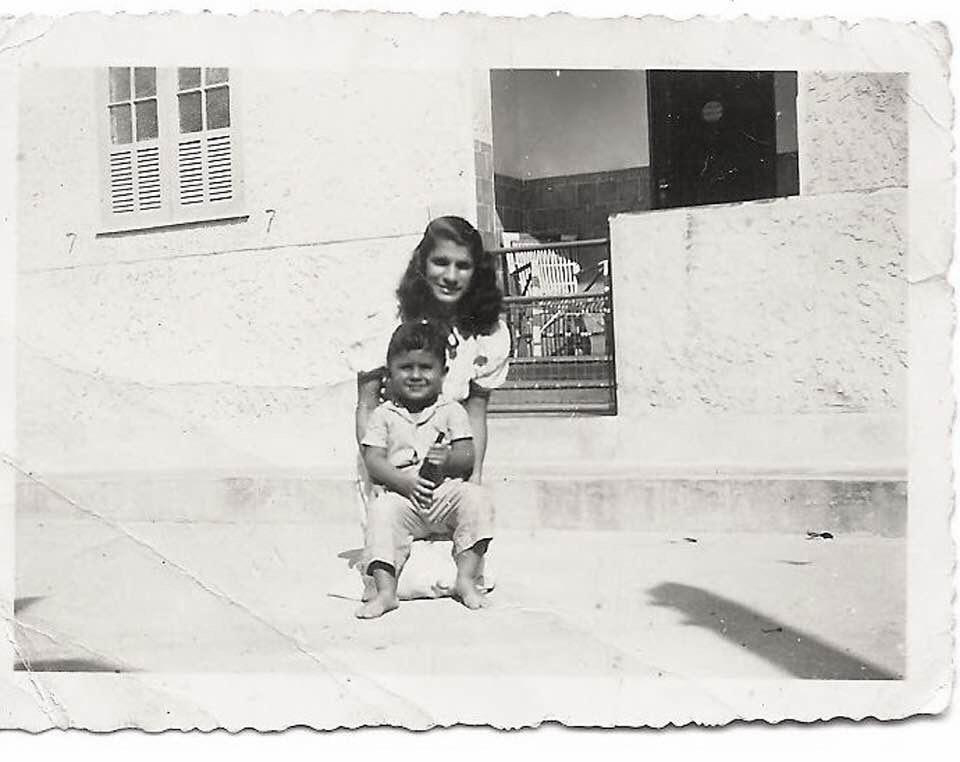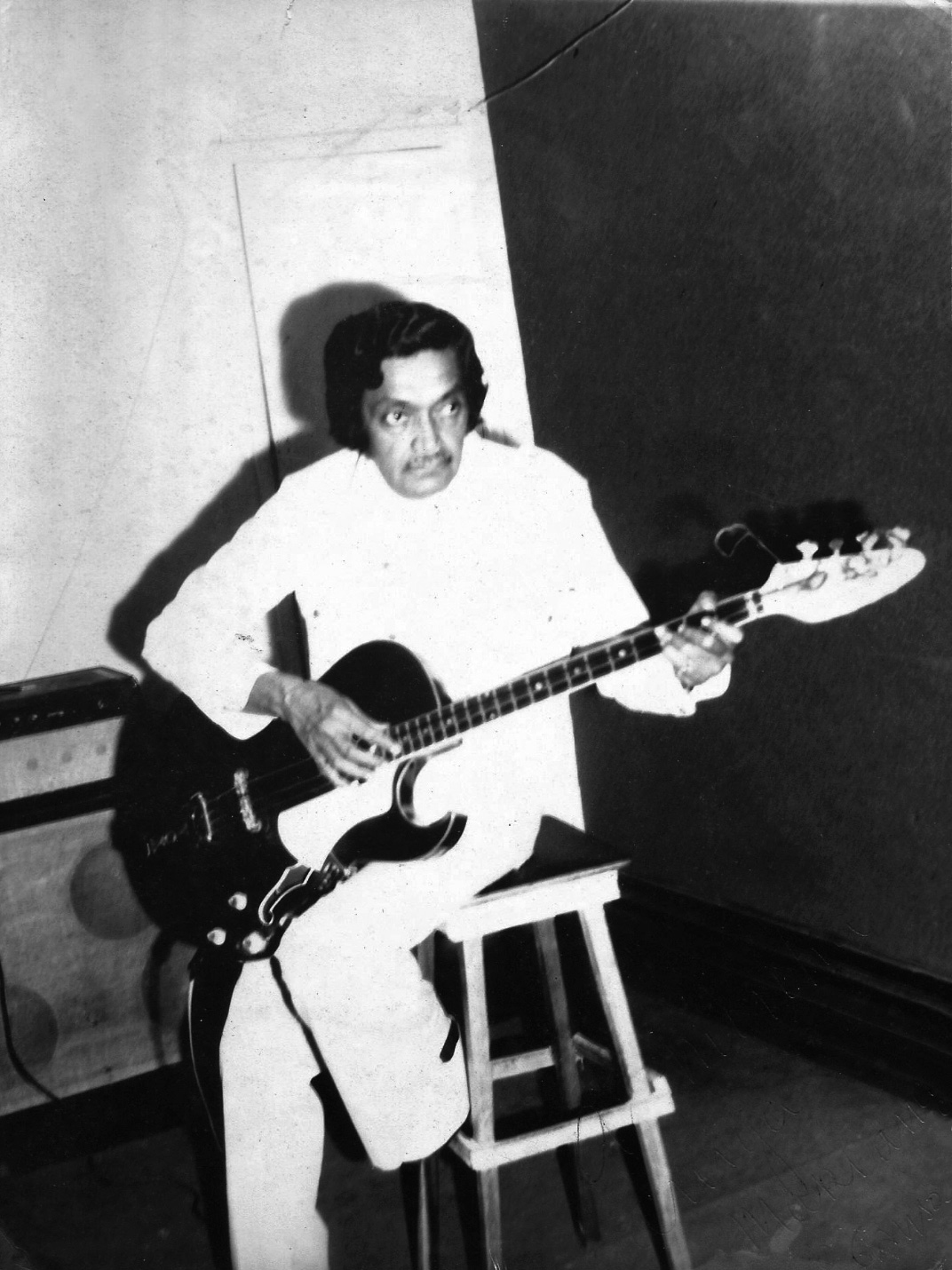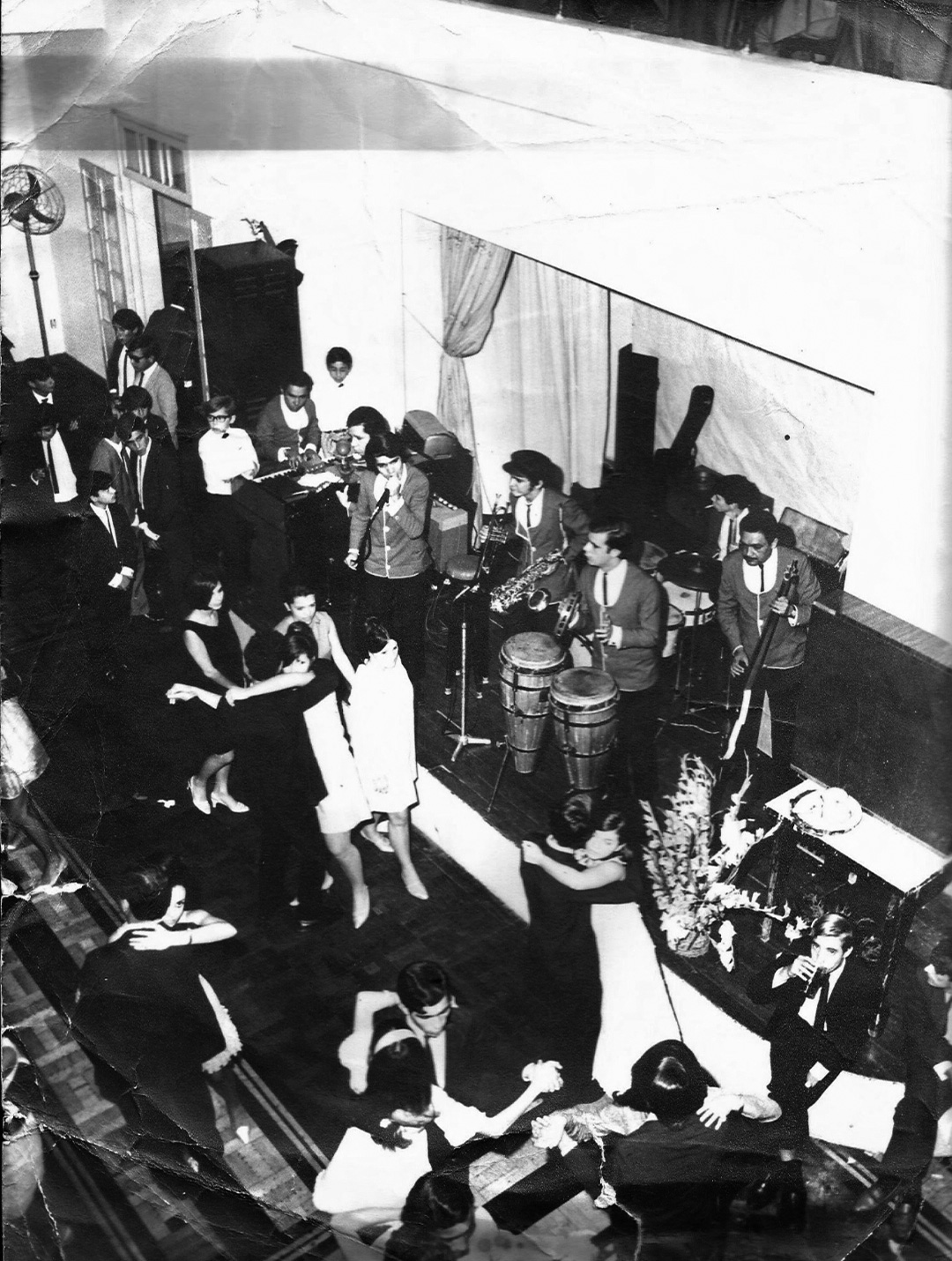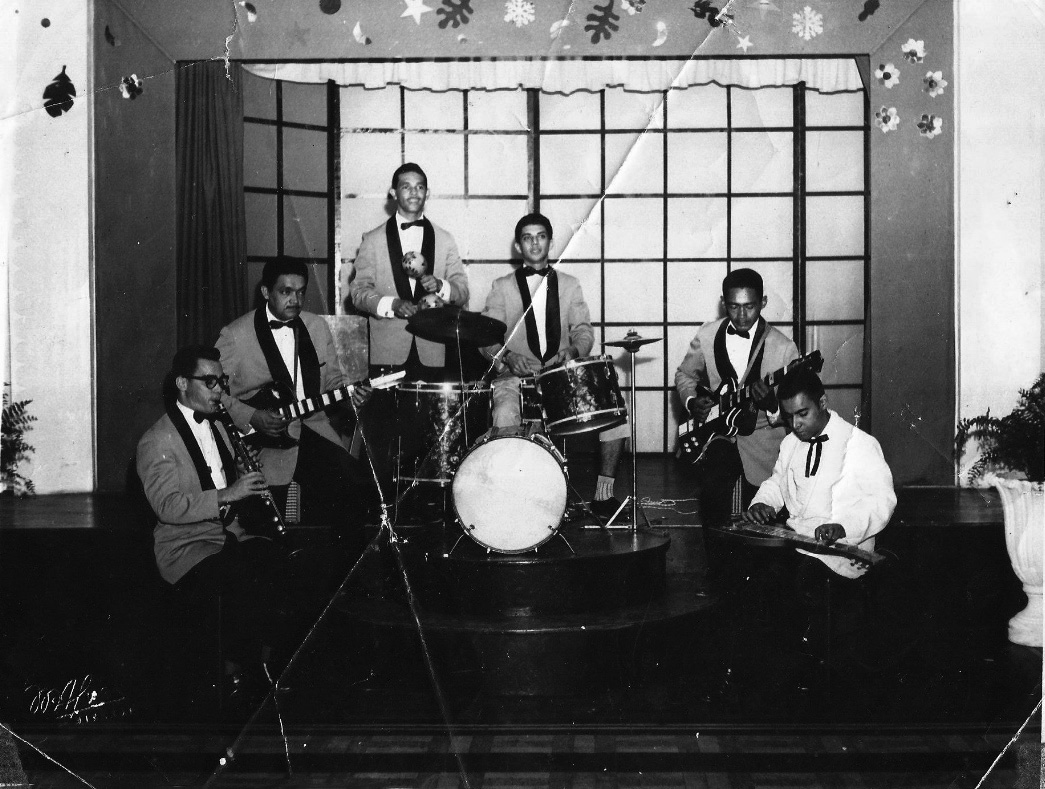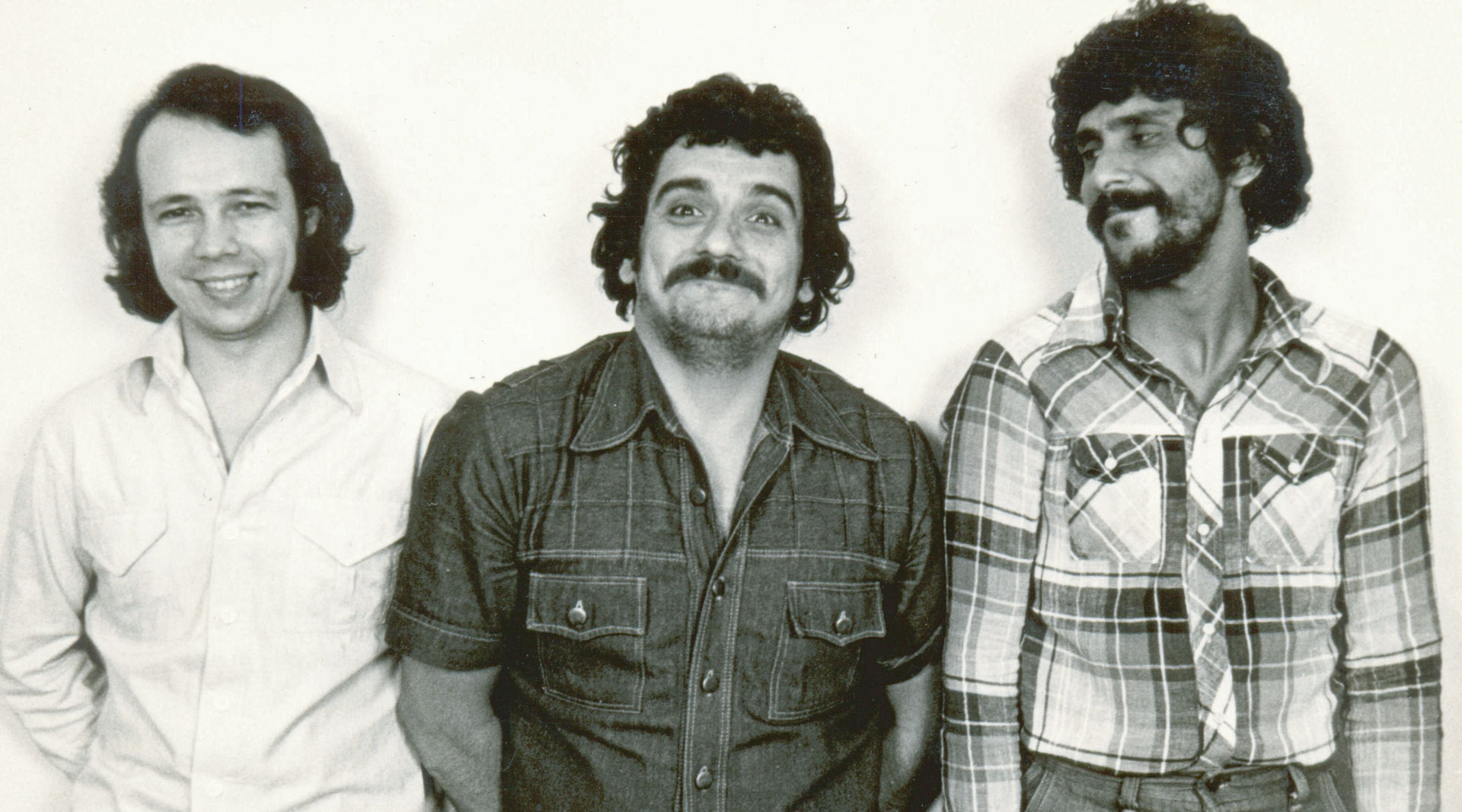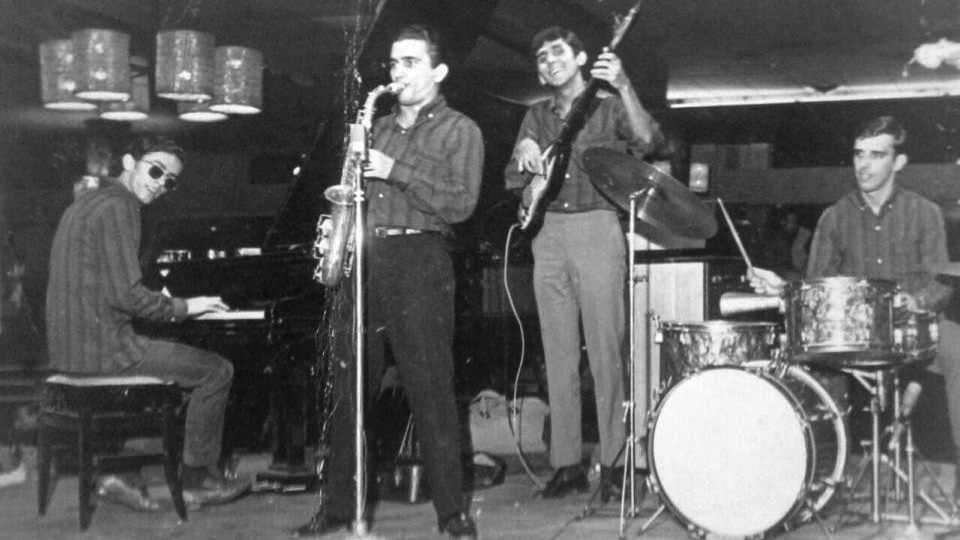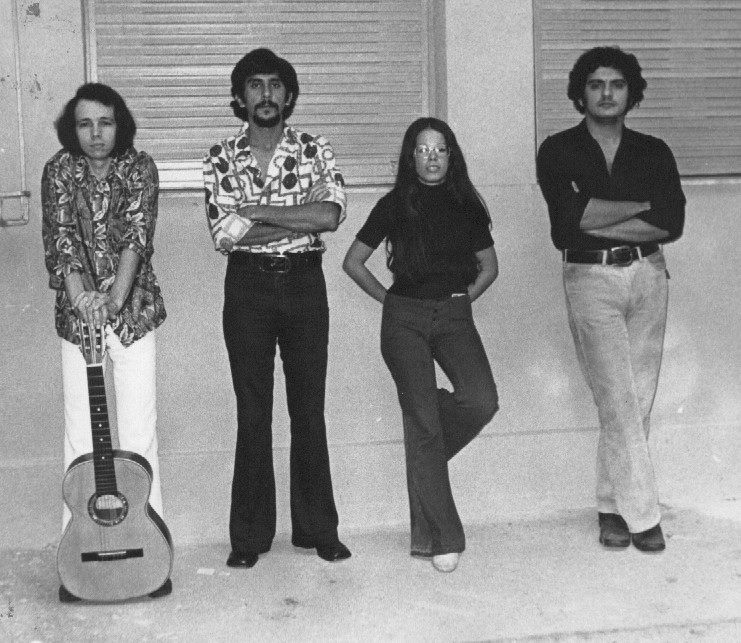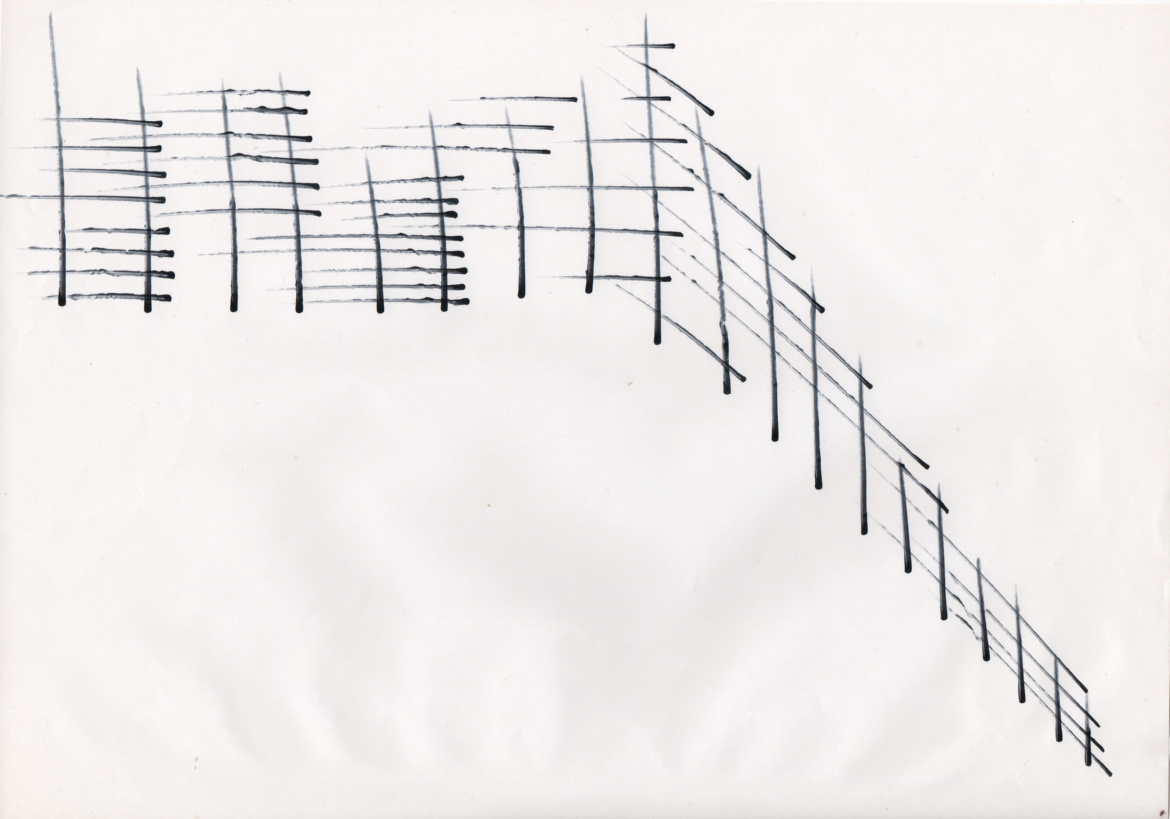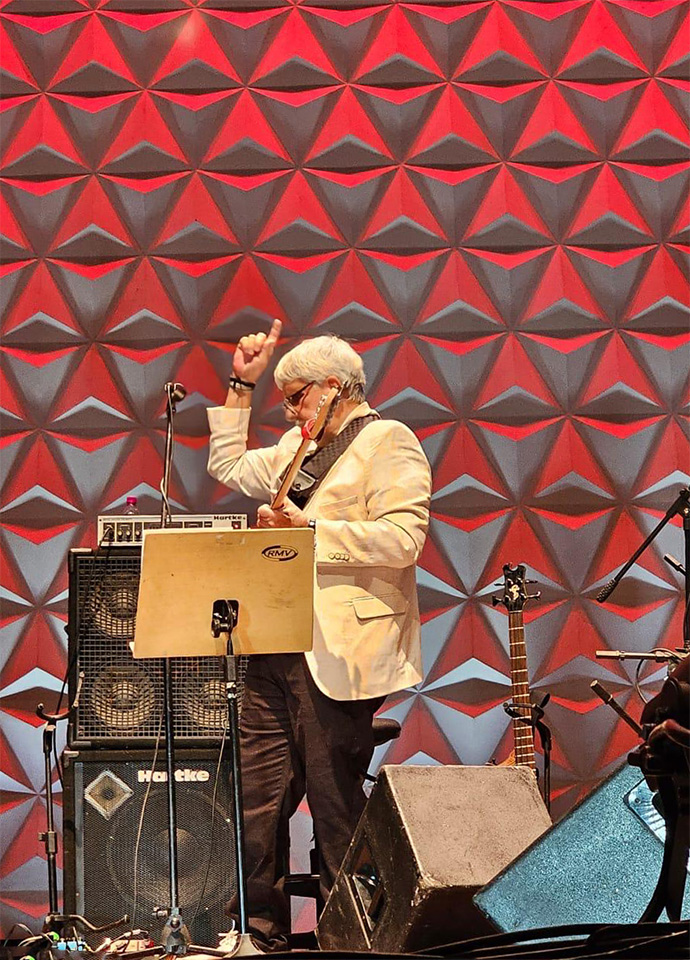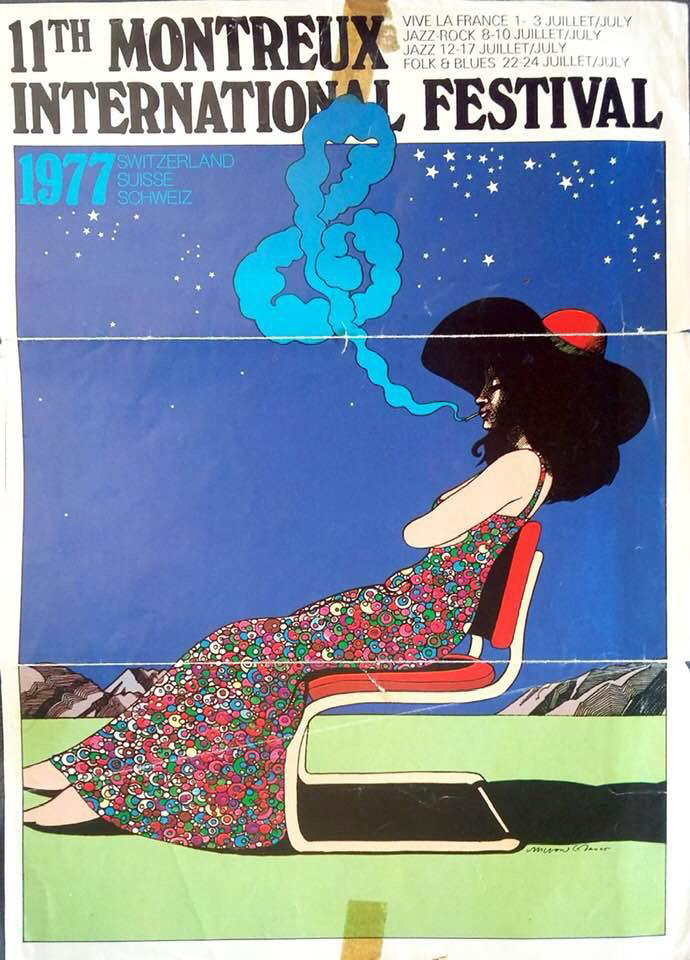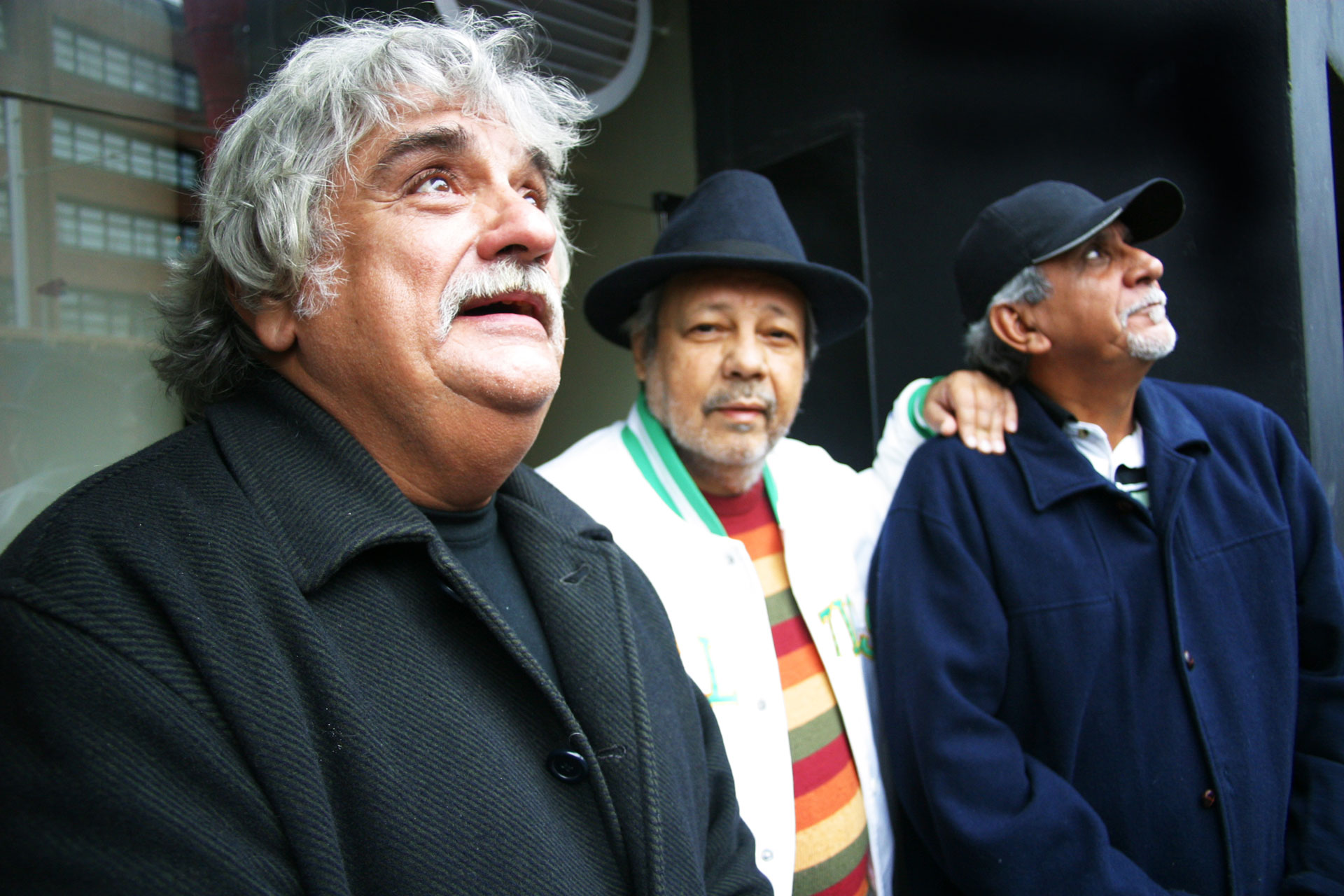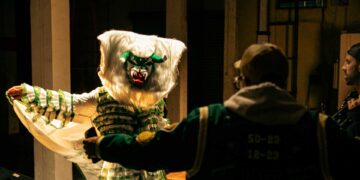Arthur Malheiros: It’s so good to be back together. Coming back to this place is always special. Do you remember the old lookout where we used to ride our soapbox carts downhill? You, Alex, jumping with the Vespa—brave as ever. Now it’s the Museum of Contemporary Art, a Niemeyer masterpiece, but to us, it still smells like the sea, like shellfish boiling in the pots of the fishermen on the rocks down there… like our octopus and grouper fishing trips, submerged in water and in childhood.
Alex Malheiros: And the cocorocas [kind of fish like bluestriped grunt] on Icaraí beach? We used to catch them with little rods… It’s all so vivid. Every corner of this city brings a memory rushing back.
Arthur: I still smell tube amplifiers, cobbler’s glue, the soldering iron… circuit boards, musical instruments, guitar strings, speaker boxes. Pure nostalgia. It’s good to be in Niterói.
Alex: That’s right, Arthur. Our home. Where it all began. I remember the living room full of instruments. Dad tuning the guitar, Uncle Geraldo fixing the speakers, mom humming softly as she cooked lunch. It was a constant buzz of creativity and affection.
Alex Malheiros and his mother, Juslei dis Reis. Courtesy of the family.
Arthur: We were shaped by that environment. Dad’s workshop was almost like a temple. I’d spend hours watching him on the upright bass. And Uncle Geraldo, surrounded by cables, guitars, and soldering tools. They spoke about sound with such passion, as if they were sculpting music with their hands. I was mesmerized by that sonic alchemy.
Alex: And Uncle Eduardo Malheiros, too. He was the one who taught me the Pulo Gato—that groove full of swing and soul, which became a family secret. He spoke about music like it was a sacred path. That stuck with me.
Arthur: I was captivated by form and color. When we watched musical films with Dad, it wasn’t just the sound that got me. It was the whole aesthetic: the costumes, the stages, the lights. I wanted to translate all that onto paper. Guitars reflecting light, psychedelic sets… It all became lines and paint in my mind.
Alex: And I was already hooked on sound. I wanted to understand how the notes fit together, how the tone moved the soul. I’d try to mimic the solos on records, searching for a form of expression that was mine alone. It was like drawing with sound. And everything was connected to how they treated the materials: wood, metal, tubes, strings, notes.
Arthur: That pursuit of expression is what connects us. You through harmony, melody, rhythm. Me through line, form, visual composition. Our parents and uncles taught us to respect raw material—whether it’s an instrument or a canvas. To them, art was listening, labor, and devotion.
Alex: Dad (Seu Zezinho) and Uncle Geraldo would spend whole nights adjusting an instrument, chasing that perfect crunch in the sound. They called it a “dialogue” with the equipment. And it wasn’t an exaggeration.
Courtesy of the family.
Arthur: Mom, when she sang, seemed to go into a trance. She surrendered completely to the music. That kind of deep listening, that connection to something invisible, still inspires me today. I try to capture that in my paintings.
Alex: Many times, when composing, I feel like I’m not creating, but revealing something that was already there—hidden in the strings. I just needed to find the right path.
Arthur: Exactly. The same source, two different paths. You with notes, me with lines. The mission is the same: to move people, to transport them, to stir emotion.
Alex: And deep down, it all comes from that house. From those conversations, those instruments, those paints, those voices, the kitchen sounds, the faith in their hands.
Arthur: And the mutual admiration. Me for your music, you for my art. That’s part of the inheritance too: respect for the other’s expression.
Alex: It’s a legacy. And I’m glad we carry it together.
Arthur: To wrap up, tell us a bit about Azymuth. For those reading, it’s important to understand what music has meant in your life.
Azymuth’s original lineup from left to right: José Roberto Bertrami (keyboards), Ivan Conti, known as Mamão (drums, percussion), and Alex Malheiros (bass, guitars), c.1970. Courtesy of the family.
Some of Azymuth’s album covers.
Alex: When we first got together in the late ’60s, no one could’ve predicted how far Azymuth would go. We were just a bunch of friends, each playing in different bands on one of the many stages at Canecão. We’d catch each other between sets. It was Zé Roberto who brought us together—before we even had a name. Back then, we were making what people called “commercial” records. But that’s when the real idea started to take shape: to fuse samba with jazz, funk, rock—everything we loved.
I was on bass and guitar, Ivan “Mamão” on drums, Zé Roberto Bertrami on keys (those wild analog synths with their endless textures), and Ariovaldo on percussion. What we were doing felt like sonic alchemy. We weren’t just blending styles—we were trying to invent a sound with Brazil’s soul and the world’s ears.
We hustled for years. Played for other artists, laid down backing tracks, rehearsed relentlessly. But deep down, we knew there was something unique there. And soon, the audience felt it too. Once the records started coming out, doors began to open abroad. We found ourselves in places we’d never dreamed of. Azymuth became synonymous with a modern Brazilian sound—groovy, bold, and unmistakably ours.
Courtesy of the family.
Grupo Seleção (pre Azymuth), 1969-1972. From left to right: Zé Roberto Bertrami, Alex Malheiros, Fabíola Sendino, and Ivan Conti “Mamão”. Courtesy of the family.
From left to right: Alex Malheiros, Zé Roberto Bertrami, Ariovaldo Contesini and Ivan Conti “Mamão”. 1973-75.
We’re still going strong. Life evolves, times change, but the essence stays the same: a deep love for music and a drive to create something honest. Stepping onto a stage and seeing our music still move people—that’s a gift. The journey’s been long, full of ups and downs, but always guided by a relentless passion for sound.
And there’s one thing I’ll never forget: the cover of the Melô da Cuíca single. A futuristic vision of Rio—warheads, satellite dishes, and a sky streaked in red, orange, and yellow. It looked like the dawn of another planet. That image captured the boldness of our sound. A visual and sonic delirium. Just like everything we’ve always chased.
Azymuth’s album Melô da Cuíca, 1975. Courtesy of the family.
Arthur Malheiros, Studies, 1977-78. India ink on paper. Courtesy of the artist.
Left image: Alex Malheiros performing at Sala Cecília Meireles, Rio de Janeiro, 2025. Right image: Montreux International Jazz Festival poster by Milton Glaser, 1977. Azymuth were the first Brazilian artists ever invited to perform at the festival. Courtesy of the family.
Art Dialogues would like to honor Azymuth—trailblazers of Brazilian music—for their groundbreaking legacy and lifelong devotion to sound.
Their story is one of friendship, resilience, and fearless experimentation. From the stages of Rio de Janeiro to international acclaim, Azymuth has remained faithful to their musical truth, inviting generations of listeners into a rhythm that is both sophisticated and deeply human.
Born from a playful and intuitive blend of musical influences, Azymuth synthesized the unique tastes of its members. Fascinated by American jazz, R&B, and the emerging funk scene, they boldly experimented with local samba rhythms—at a time when this fusion was uncharted territory. What emerged was Samba Doido—“crazy samba”—a style that broke new ground in Brazilian music. It transcended the rhythmic elegance of bossa nova and ventured into a rich, sensory soundscape that was entirely their own.
Their music opened up an entirely new reality for Brazilian audiences, while captivating people around the world with its innovation, groove, and emotional depth. More than a band, Azymuth became a symbol of what it means to remain true to artistic vision while embracing change.
We are proud to celebrate their extraordinary contribution to culture—their sound, energy, curiosity, and love continue to resonate. Here’s to the music, to Ivan “Mamão” Conti and José Roberto Bertrami—who have already followed their path to another universe—to Alex Malheiros, who continues to share his magnetic sound, and to the magic of Azymuth: timeless, fearless, and always ahead of its time.
Special thank you to Arthur Malheiros and Keta Baramishvili [who also collaborated in this text] for making it all possible.
To know more about Azymuth: @azymuthoficial
Hero image: Arthur Malheiros, untitled, 1978. Ink and pastel. Courtesy of the artist.

